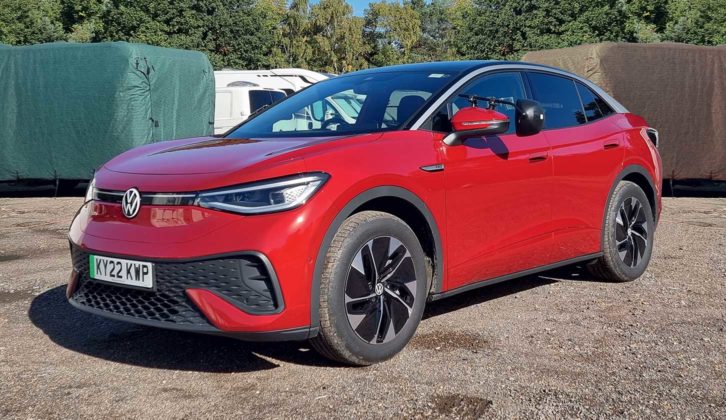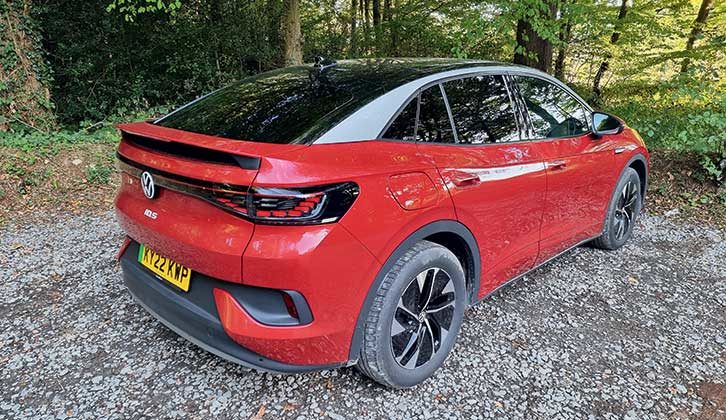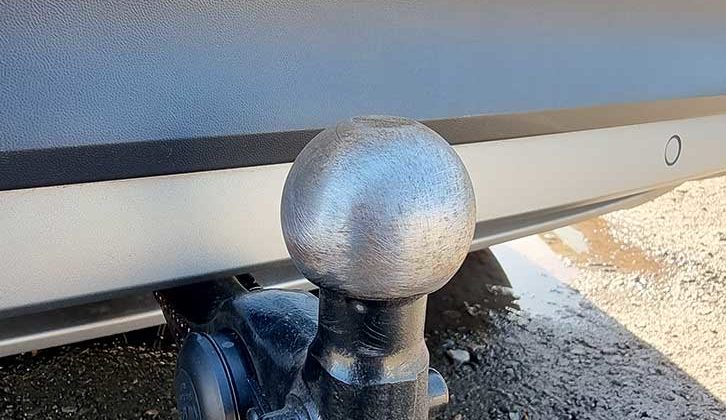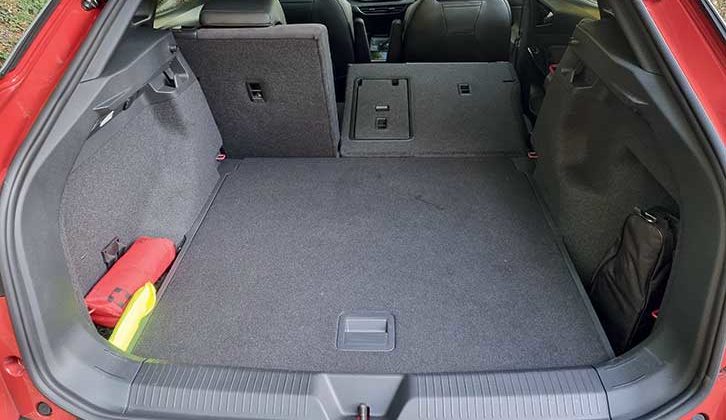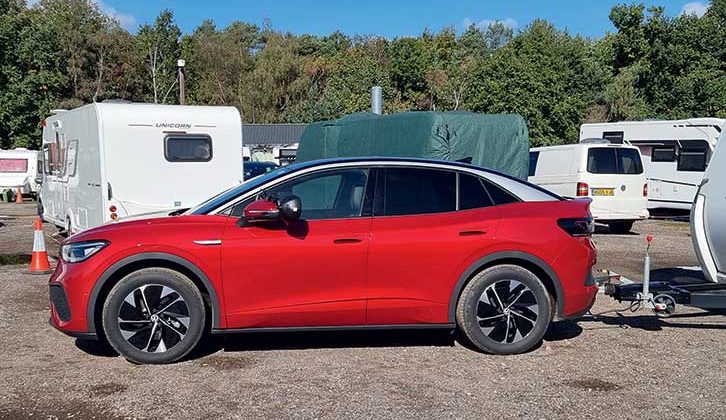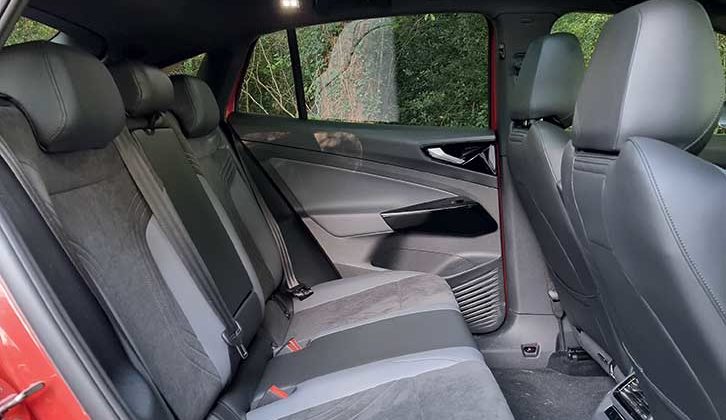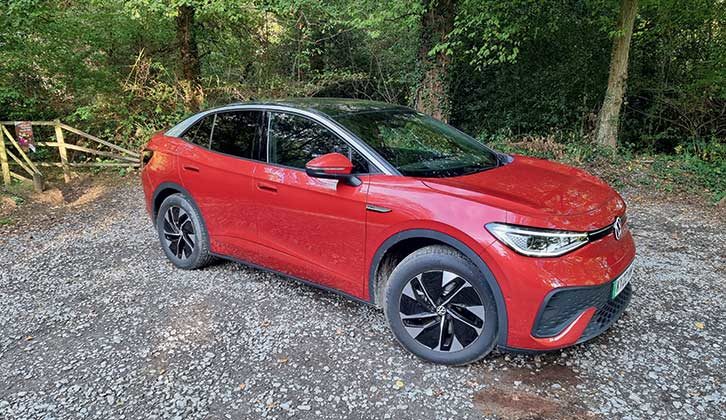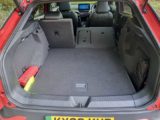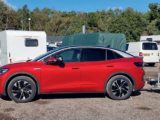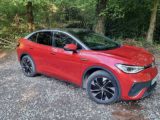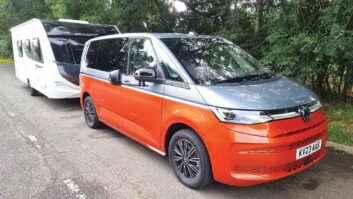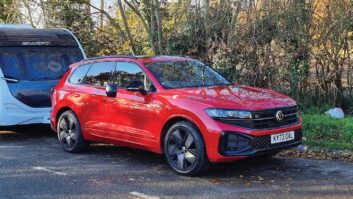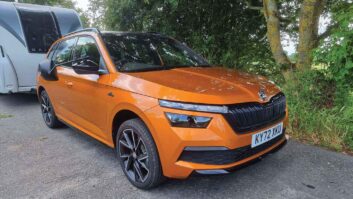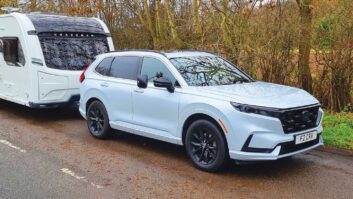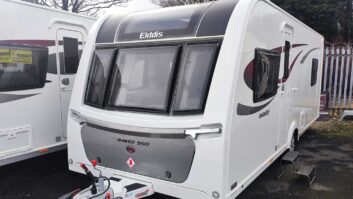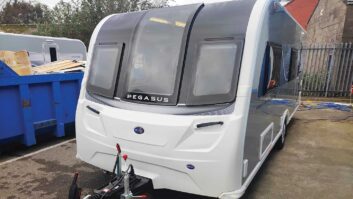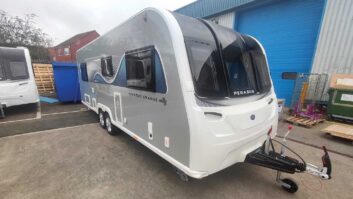The ID.5 is a new member of Volkswagen’s ID family of electric vehicles. It’s based on the ID.4, but with a coupé-like body to trade some practicality for good looks. The electric powertrain is available with three different power outputs. Here, we’re testing the mid-spec motor with 204hp, the Volkswagen ID.5 77kW 204PS Pro Performance Style.
In ‘Style’ trim, the ID.5 is well equipped but quite pricey, costing more than £52,000. That puts the VW in direct competition with our current favourite electric tow car, the Kia EV6.
What are we looking for?
There’s a lot to consider when you’re choosing the right tow car and we’ve had mixed experiences towing with electric cars. As a rule, they’re stable, but their short range and the vexed question of recharging mid-journey can make life complicated for early adopters. Is it worth working around these difficulties to enjoy the ID.5’s other qualities?
Towing ability of the Volkswagen ID.5 77kW 204PS Pro Performance Style
Like most electric cars, the ID.5 is heavy – very heavy. With a kerbweight of more than 2.1 tonnes, it has a similar heft to large 4x4s such as the Audi Q7, despite actually being closer in size to a Kia Sportage or Volkswagen Tiguan.
That’s a good thing when it comes to matching ratios, although the ID.5’s low towing limit of 1000kg means that no ID.5 owner can really take much advantage. An 85% match, usually recommended as a sensible maximum caravan weight for safe and stable towing, would exceed the towing limit by several hundred kilos.
Just a few years ago, being able to tow anything was a plus for a new EV, but when the likes of the Hyundai Ioniq 5 and the Kia EV6 can tow 1600kg, a 1000kg maximum is pretty disappointing.
We matched the VW to a Bailey Discovery D4-2 with a MiRO of 884kg, and an MTPLM of 995kg.
Like other electric tow cars, the ID.5 feels lively from a standing start. The electric motor immediately delivers maximum pulling power, which is great when you are moving away from a junction.
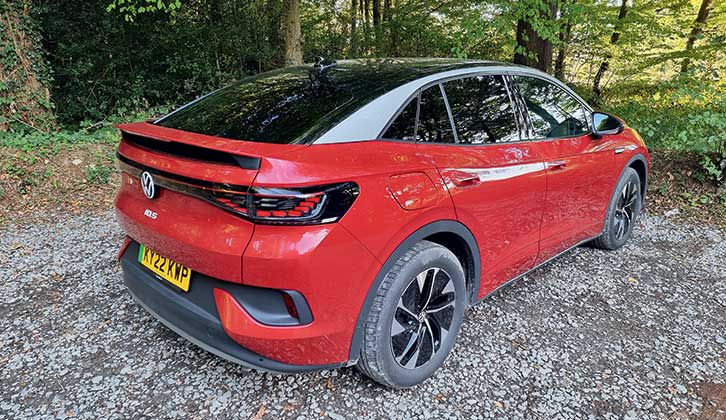
As speeds rise, the ID.5 still feels as though it has plenty of poke in reserve, although it doesn’t match the punch of the EV6 AWD or the Tesla Model Y. Both of these accelerate harder up to 60mph. The ID.5 is far from slow, but we have been somewhat spoiled by the extra muscle to be found in some other EVs.
Stability is excellent, as it should be when the tourer weighs half as much as the caravan tow car. There’s very little movement from the caravan at all, even if the wind picks up. If you do see the odd twitch from the van in your mirrors, the Volkswagen quickly pulls it straight again.
On country roads, the ID.5’s suspension keeps the caravan well controlled. The ID.5 also has no trouble maintaining speed when driving uphill.
Hill starts are straightforward, with one proviso. Because the parking brake and ‘park’ in the gearbox are controlled by one button, it’s very tricky to pull away without rolling backwards unless you have the ‘auto hold’ function active.
In most Volkswagens, this requires a simple button press, but in the ID.5, with its minimalist dashboard, you have to search through the touchscreen menus to find the auto hold. This makes what ought to be a simple job unnecessarily complicated.
So long as you’ve switched this feature on, however, the ID.5 is happy to pull away uphill, even on a damp surface. Despite the SUV-meets-coupé styling, it is rear-wheel drive rather than a 4×4, but there was no sign of wheelspin while we were driving.
When you arrive at your destination, you’ll find the ID.5 is easy to manoeuvre, so long as you adjust to how quickly an EV can pull away from standstill. A rear-view camera gives clear sight of the towball when it’s time to head home again.
The towing gear stays hidden under the back bumper until needed, and drops down at the press of a button. It has to be locked in place by hand, though. The 13-pin socket is on the side of the towbar, easy to reach and well clear of the car’s bumper.
Solo driving
The ID.5 is pleasant to drive day-to-day. It’s not as quick as some similar rivals, but has more than enough performance to keep most drivers happy.
You can choose from three power outputs: 174hp, 204hp and 299hp. The mid-spec 204hp is brisk enough on A-roads and motorways, but with a longer range and a lower price than the 299hp car.
The ride is mostly comfortable, albeit with a bit of fidgeting at lower speeds. It feels smooth and controlled beyond city limits. Like a lot of electric cars, the ID.5 corners neatly, but it’s not the most exciting car on a twisty road. Competent, rather than compelling.
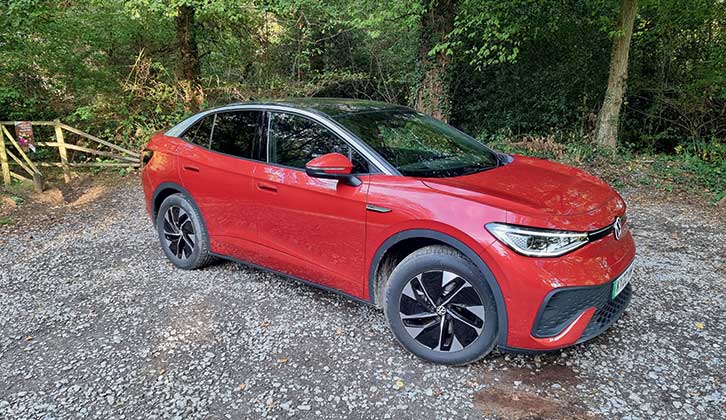
In town, the biggest irritation is the split rear windscreen, with an aero-enhancing spoiler compromising the view. It’s annoying whenever you look in the rear-view mirror, but especially when you are reverse parking. Front and rear sensors and a rear-facing camera help, but we’d much prefer to be able to see clearly for ourselves.
Otherwise the ID.5 is well suited to town driving. It’s smooth and quiet. Switching the gearbox from ‘drive’ to ‘B’ increases battery regeneration while slowing and braking, to maximise range. It feels a bit odd if you are new to EVs, but you soon get used to it.
Space and practicality in the Volkswagen ID.5 77kW 204PS Pro Performance Style
Put the ID.4 and ID.5 next to each other, and the coupé-like profile of the ID.5 is obvious.
The sloping roofline does compromise practicality a little, but there’s enough headroom for six-foot passengers to travel in comfort without their head brushing against the ceiling.
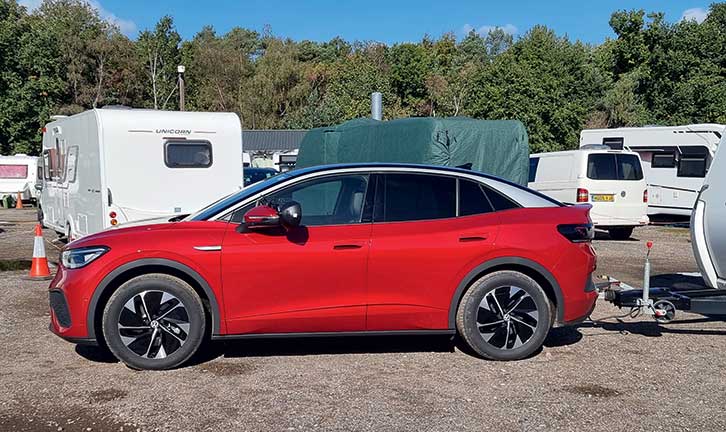
Legroom is generous, and with lots of shoulder room and a flat floor, three people can relax in the rear seats.
If there are only two, the centre seat back folds to form an armrest with cup holders.
The cabin finish in the rear lacks the polish you’d hope for, with lots of hard, cheap-looking plastics. The front of the cabin is a bit more in keeping with the ID.5’s £50,000+ price tag.
In place of conventional dials, there’s a digital display which can be configured by the driver, and next to that, a large infotainment screen. It looks great, but it’s fiddly to use and occasionally glitches, while having touch-sensitive pads to adjust the air conditioning is far more distracting on the move than buttons and dials.
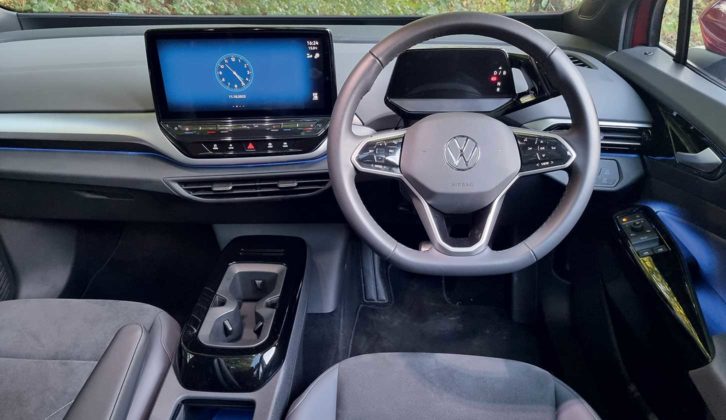
The driving position is sound, with enough legroom for a 6ft 3in driver without having to slide the seat right back. There’s also a huge amount of seat-height adjustment, so that you can sit reasonably low to the floor or high up, SUV-style; whichever you prefer.
The boot space is generous, with 549 litres for your luggage. That compares with 543 litres in the ID.4 and outdoes the 490 litres in the EV6 AWD.
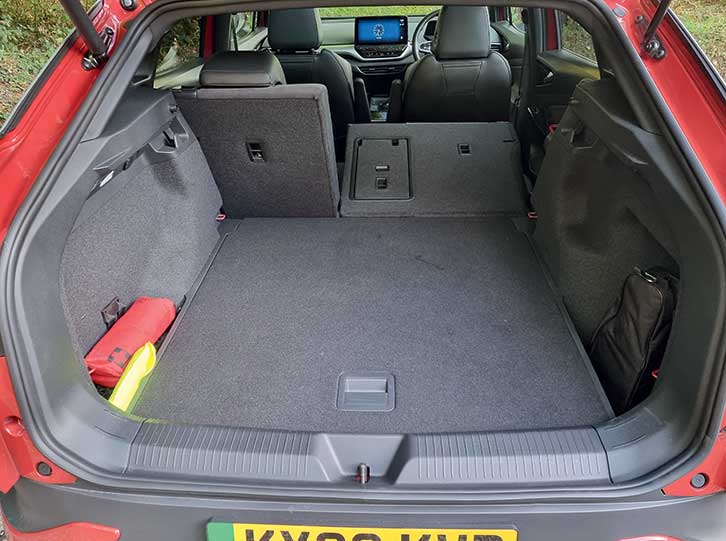
The rear seats fold down if more space is needed, but there are no remote-release levers by the tailgate, so you’ll have to walk around to the back to do this.
There’s room under the boot floor for charging cables.
Buying and owning a Volkswagen ID.5 77kW 204PS Pro Performance Style
Like any EV, a big part of the ID.5’s appeal will be its low running costs. Energy price hikes may have eaten into that saving, but it’s still there, so long as you can recharge at home (and ideally overnight on a low-cost tariff).
The ID.5 is expensive to buy, though. Even the entry-level model costs £50,625, compared with a Kia EV6’s £45,195 starting price. Our mid-spec model is priced at £52,100.
It does come well equipped (as it should), with 19-inch alloys, zoned climate control, a panoramic glass roof and a suite of driver aids.
Officially, the ID.5 will cover a competitive 327 miles on a single charge. While towing, we calculated a range of 139 miles.
Verdict on the Volkswagen ID.5 77kW 204PS Pro Performance Style
The ID.5 has many strengths. You can make your own mind up about the styling, but to our eyes, it’s one of the best-looking EVs on sale. It’s also surprisingly practical for a four-door coupé – you certainly wouldn’t expect it to have more boot space than the ID.4.
The cabin is roomy, too, and the slope of the roofline still leaves enough headroom for adults in the back.
It also drives well. It’s not as exciting as a Kia EV6 or a BMW i4, but the VW is reasonably comfortable and as quick as most of us would want to go.
The 327-mile range is very competitive, beating the 314-mile range of the EV6 AWD.
The trouble is, the list of weaknesses is just as long. The minimalist, almost button-free dash makes simple tasks unnecessarily complicated when you’re on the move. And the split rear windscreen is an irritation every time you look in the rear-view mirror.
You do pay a lot for the ID.5’s good looks. Priced at more than £52,000, the VW goes toe-to-toe with much faster competition – the EV6 AWD is 3.2 seconds quicker to 62mph, and comes with four-wheel drive. ID.5 buyers will need to step up to the GTX to send power to all four wheels, which pushes the price over £56,000.
The 1000kg maximum towing figure is very restrictive. When the BMW i4 can pull 1500kg and the EV6 tows 1600kg, it is impossible to recommend the ID.5 over the competition. Unless you tow a really light and small caravan, such as a Mink Camper, there are better EVs for towing.
See what we made of another option from the manufacturer, the Volkswagen Touareg 13.0 V6 TDI 286PS 4Motion Black Edition – it’s a stable option that provides everything an SUV should.
- Take a look at our caravan sat nav guide if you’re looking for a device to help with your navigation
Technical specifications:
- Price: £52,100
- What Car? Target Price: £51,586
- Retained value after three years: N/A
- Kerbweight: 2117kg
- 85% of kerbweight: Not permitted
- Gross vehicle weight: 2650kg
- Max towing limit: 1000kg
- Gross train weight: 3650kg
- Towball limit: 75kg
- Price of towball and electrics: £890
- Boot size min/max: 549/1561 litres
- Payload: 533kg
- Test conditions: Dry
- Engine size: N/A
- Official range: 327 miles
- Approx towing range: 139 miles
- Power (hp): 204
- Torque (lb ft): 229
- CO2 emissions: 0g/km
- First year car tax: £0
- Second year car tax: £0
- Insurance group: 33P
Or you could try…
Kia EV6 321bhp AWD
- Price From £51,695
Our favourite EV has more power and a higher towing limit than the Volkswagen.
BMW i4
- Price From £53,480
Passengers seated in the back might be a bit cramped, but otherwise the i4 is a superb EV
Škoda Enyaq iV 80 Suite
- 21-plate, 44,000 miles
- Price: £41,995
High demand means used Enyaqs are not much cheaper than new.
Jaguar I-Pace 90kWh S
- 14-plate, 33,000 miles
- Price: £39,949
This is a superb EV, but can only tow micro-caravans.
If you’ve enjoyed reading this article, why not get the latest news, reviews and features delivered direct to your door or inbox every month. Take advantage of our brilliant Practical Caravan magazine SUBSCRIBERS’ OFFER and SIGN UP TO OUR NEWSLETTER for regular weekly updates on all things caravan related.
Technical Specifications
| Kerbweight | 2117 kg |
| Towball Limit | 75 kg |
| Maximum Towing Limit | 1000 kg |
| Power | 204 bhp |
| Torque | 229 lb ft |
